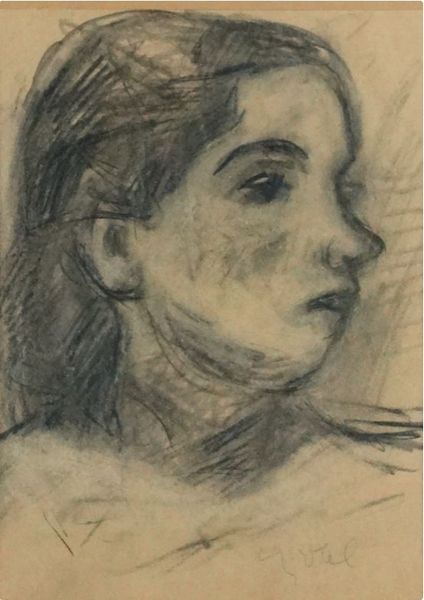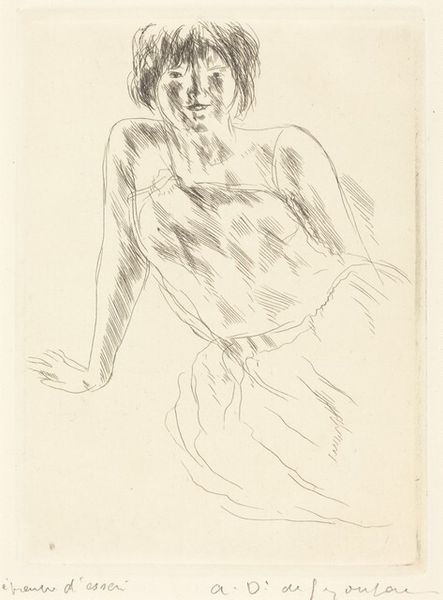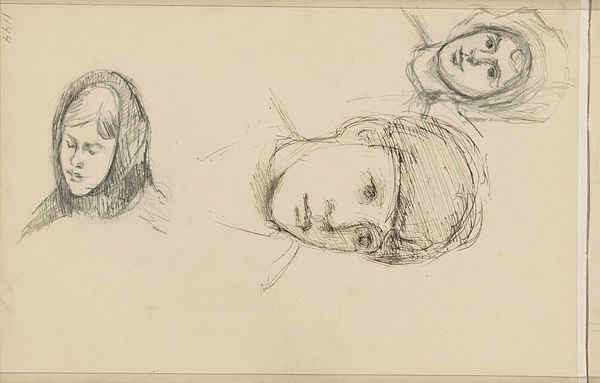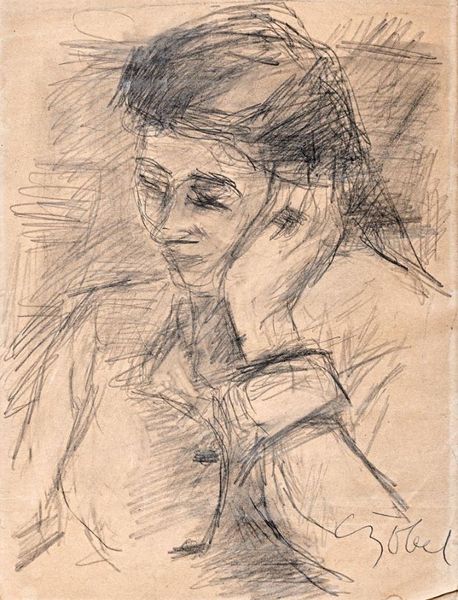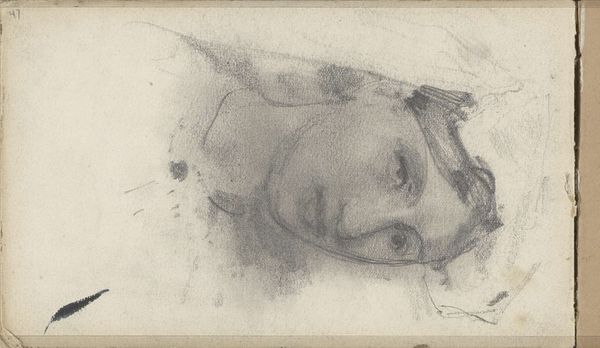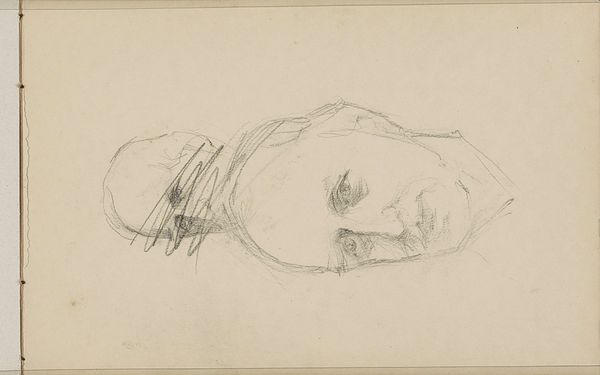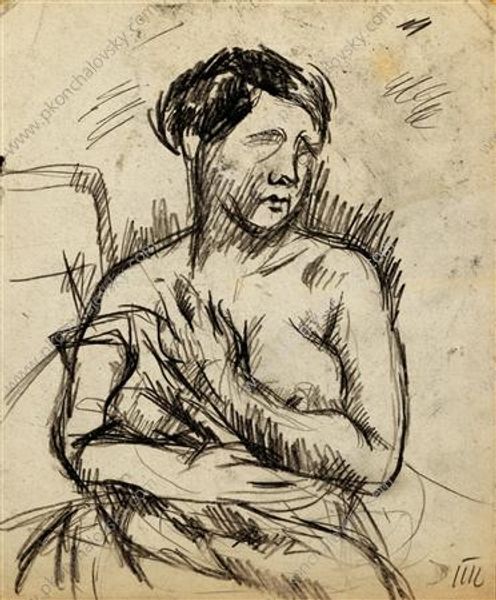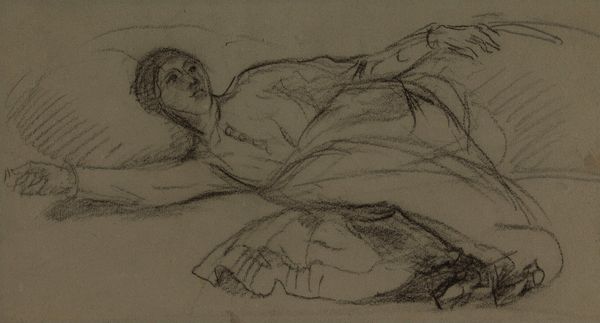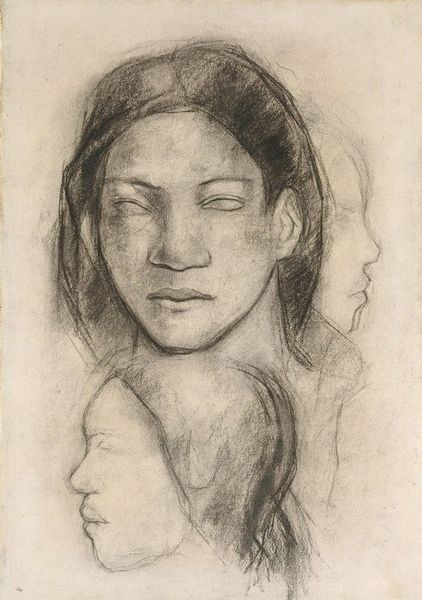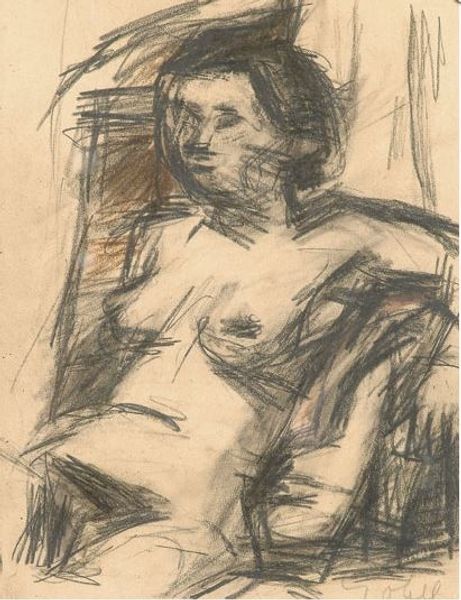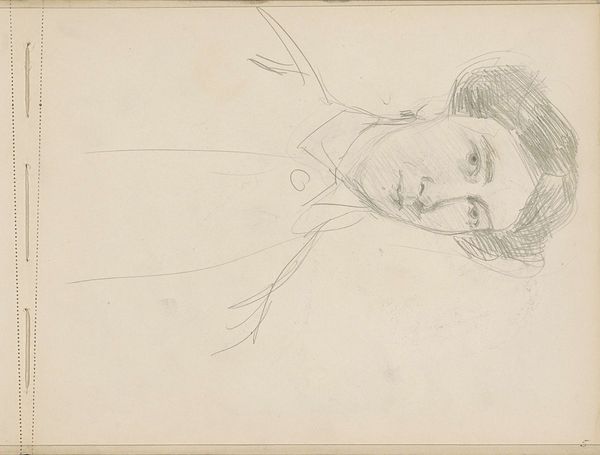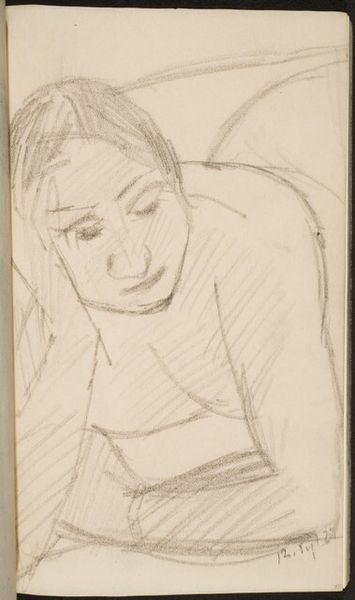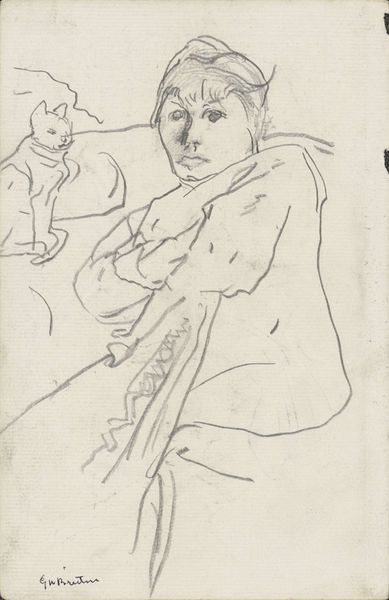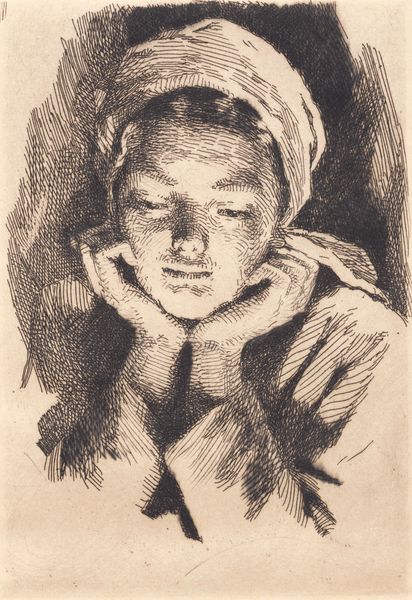
drawing, pencil
#
portrait
#
drawing
#
figuration
#
pencil drawing
#
pencil
#
portrait drawing
#
post-impressionism
Copyright: Public Domain: Artvee
Paul Cézanne's sketch of his wife, Hortense, is made from graphite on paper. The material qualities of graphite allow for a range of tonal values and textures, from light, almost imperceptible lines to darker, more defined areas. You can see how Cézanne layered the graphite to build up the form of Hortense’s face and clothing, using short, quick strokes to create a sense of volume and depth. The paper is left bare in some areas, creating a contrast between the drawn lines and the empty space. This kind of sketch wasn't necessarily considered a finished work of art in Cézanne's time, but rather part of his process. Drawing was a way for artists to study form and composition, to experiment with different ideas before committing to a final painting. So, while it may seem like a simple sketch, it reflects the labor involved in Cézanne’s artistic process. Paying attention to the materials and processes used in the creation of a work like this, gives us a deeper understanding of the artist's intentions and the cultural values of the time.
Comments
No comments
Be the first to comment and join the conversation on the ultimate creative platform.
